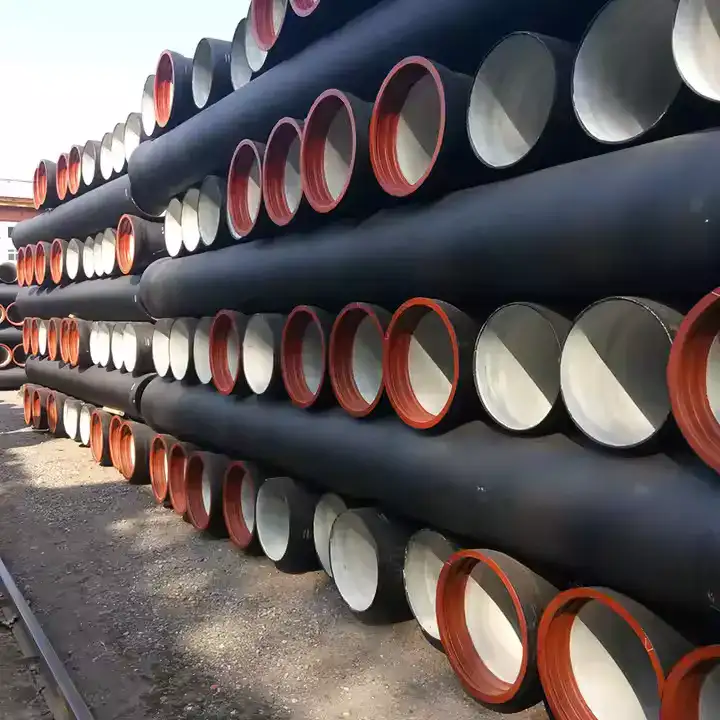Deionized (DI) water is highly aggressive toward most metals, including ductile iron, due to its lack of dissolved ions and high “hungry” capacity to leach metallic species, leading to corrosion, pitting, and premature valve failure. Chemical compatibility charts universally rate ductile or cast iron as “Severe Effect” (D) or “Conditional” (C) when exposed to DI water at ambient conditions, indicating it is not a recommended wetted material without protective measures. For reliable DI water service, specialty materials—such as 316L stainless steel, PVDF, PTFE-lined valves, or high-grade plastics—are preferred, or ductile-iron valves must employ robust linings/coatings to isolate the metal from pure water.

1. Understanding Deionized Water
1.1 Definition and Uses
Deionized water is purified to remove virtually all ionic species (e.g., Ca²⁺, Mg²⁺, Cl⁻), producing water with resistivity up to 18.2 MΩ·cm, commonly used in semiconductor manufacturing, pharmaceutical processing, and laboratory applications.
1.2 Corrosive Nature
Lacking mineral content, DI water is thermodynamically driven to leach metal ions to re-establish equilibrium, making it more corrosive than natural waters. This “hungry water” effect accelerates corrosion rates on unprotected metal surfaces.
2. Ductile Iron Valve Bodies
2.1 Material Overview
Ductile iron (also known as nodular iron or spheroidal graphite iron) contains carbon (3.0–3.7 %), silicon (1.2–2.3 %), and trace magnesium to form graphite nodules, providing superior strength and toughness compared to grey iron.
2.2 Valve Construction
Ductile-iron body valves are favored for water distribution due to their mechanical robustness and cost efficiency; however, their graphite-flake microstructure (beneath protective coatings) offers no inherent resistance to DI water’s aggressive leaching.
3. Compatibility of DI Water with Ductile Iron
3.1 Chemical Resistance Ratings
-
Greg Reyneke’s Chart: Cast, galvanized, and ductile iron pipe are rated “D – Severe Effect” in DI water, meaning rapid degradation is expected.
-
Tyler Pipe Guide: Ductile/cast iron valve bodies receive a “C – Conditional” rating for DI water (up to 150 °F), signaling limited use only with careful monitoring and maintenance.
-
Val-Matic Guide: Ductile iron shows marginal performance (“C”) with deionized water at ambient temperatures, improving slightly at elevated temperatures—but still not ideal without lining.
3.2 Observed Corrosion Mechanisms
DI water can induce uniform corrosion, localized pitting, and accelerated leaching of iron ions, leading to valve seat binding, particulate contamination, and decreased valve life.
4. Protective Measures
| Measure | Description |
|---|---|
| Internal Linings | Epoxy or PTFE coatings isolate DI water from metal, reducing ion leaching and pitting. |
| Seat & Seal Materials | Use PTFE, EPDM, or Viton elastomers compatible with DI water to maintain tight shutoff . |
| Cathodic Protection | Electrically isolating valve bodies or applying sacrificial anodes can mitigate electrochemical corrosion. |
| Coated Fasteners | Stainless steel (316L) or nickel-plated bolts resist DI water attack, preventing galvanic cells. |
5. Alternative Valve Materials
For pure-water service, consider these options:
| Material | Compatibility Rating | Benefits |
|---|---|---|
| 316L Stainless Steel | A – Excellent | Proven resistance to DI water; minimal ion leaching. |
| PVDF (Polyvinylidene) | A – Excellent | Chemically inert, high temperature tolerance. |
| PTFE-Lined Valves | A – Excellent | Virtually impermeable; excellent seal integrity. |
| PVC / CPVC | A – Excellent | Cost-effective; widely used in lab and industrial DI systems. |
| High-Performance Plastics | A – Excellent | PEEK, PVDF, and Acetal offer broad chemical resistance. |
6. Application Guidelines
-
System Design: Minimize dead legs and stagnant zones; ensure continuous flow to limit contact time.
-
Water Quality Monitoring: Regularly test conductivity and iron concentration; maintain resistivity above 1 MΩ·cm in distribution loops.
-
Flushing & Passivation: Flush new installations with DI water post-manufacture to remove residual ions; consider chemical passivation for stainless components.
-
Temperature Control: Elevated temperatures can both accelerate corrosion and improve some material ratings—balance system requirements accordingly.
7. FAQ
Q1: Can deionized water flow through a ductile iron valve body?
A: It can, but ductile iron is not recommended as a wetted surface for DI water due to severe corrosion risk; protective linings or material alternatives are advised.
Q2: What’s the compatibility rating of ductile iron with DI water?
A: Chemical guides rate ductile iron as “D – Severe Effect” or “C – Conditional,” indicating it may degrade rapidly under normal conditions.
Q3: Which valve materials are best for DI water?
A: 316L stainless steel, PVDF, PTFE-lined, and high-performance plastics are top choices, all rated “A – Excellent” for deionized water service.
Q4: How can I protect a ductile iron valve in DI service?
A: Use robust internal linings (epoxy, PTFE), replace metallic fasteners with SS, and implement cathodic or anodic protection methods.
Q5: How often should I inspect DI water valves?
A: For lined or plastic valves, semi-annual visual and conductivity inspections are typical; for metal valves, quarterly monitoring of iron levels is recommended to detect early corrosion.
References:
- Deionized Water – Wikipedia: Properties, Uses, and Corrosiveness
- NACE International – Corrosion in Water Systems and Materials Compatibility
- Val-Matic Valve & Manufacturing Corp. – Valve Materials Compatibility Guides
- Tyler Pipe – Chemical and Corrosion Resistance Guide for Valve and Pipe Materials
- U.S. FDA – Regulatory Information on Materials for Water Contact Applications
